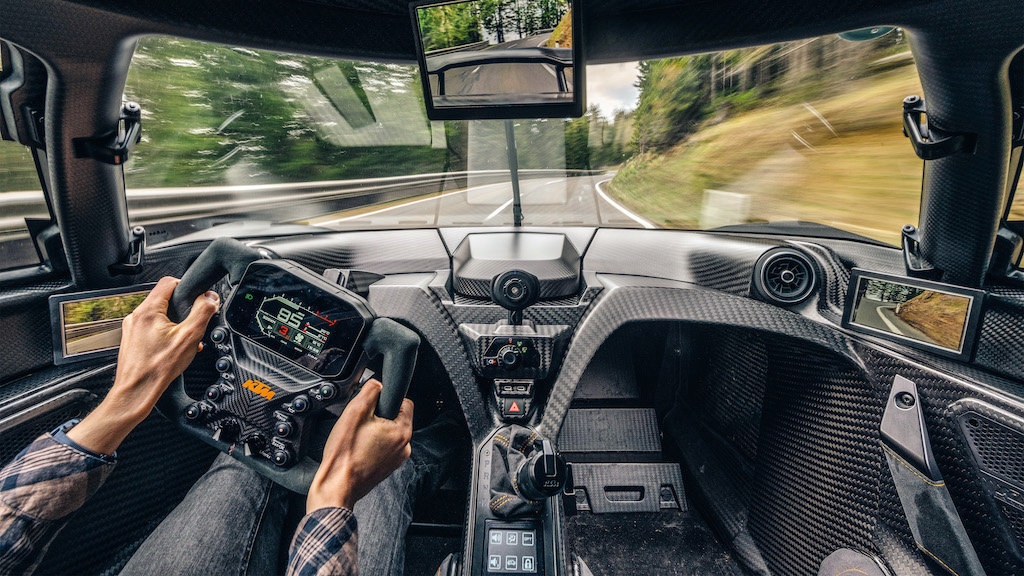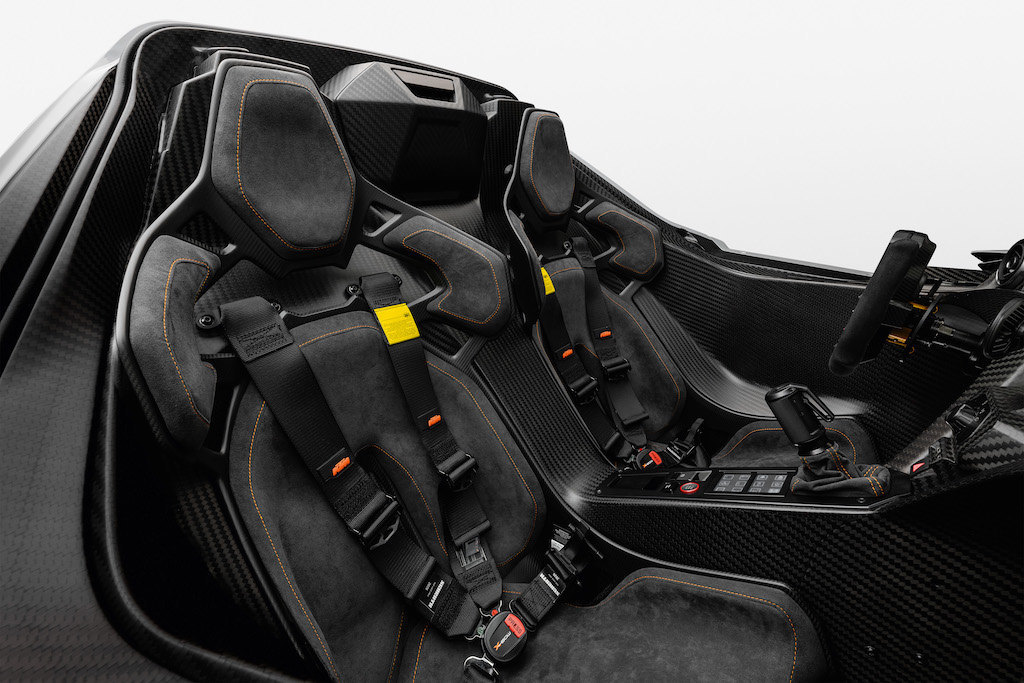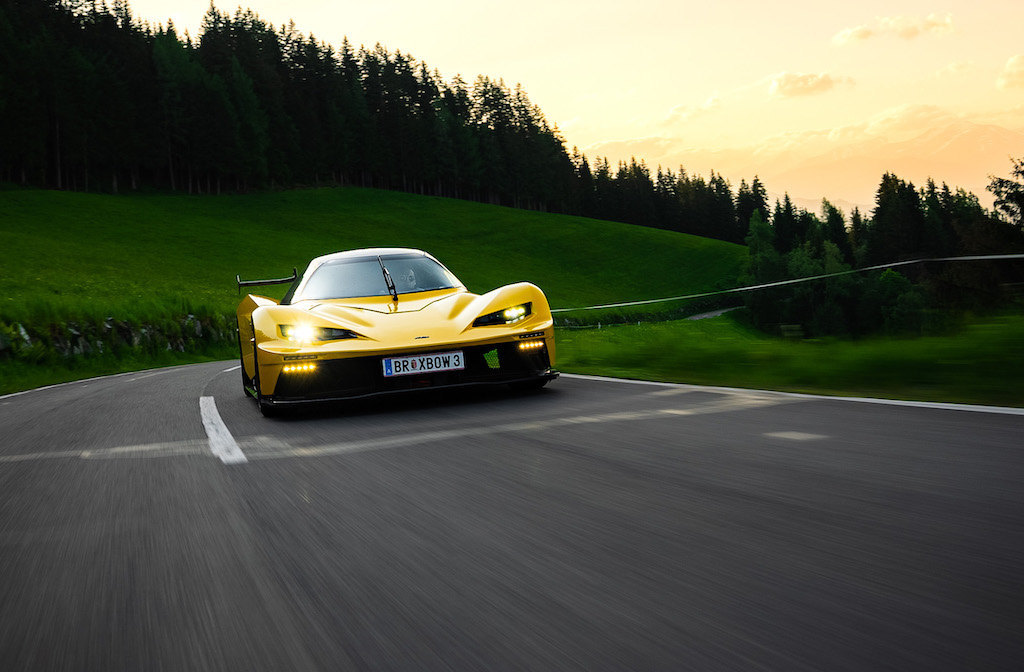Focus on the technology of the KTM X-Bow GT-XR
Focus on the technology of the KTM X-Bow GT-XR | July 11, 2023
The faster a car must be, the safer it must be…
Whether a racing car or a super sports car: the faster a car is, the safer it must be. In order to meet the highest safety standards while implementing lightweight and consistent construction, the specialists from KTM and KISKA have already gone their own way in the development and design of the KTM X-BOW GT-XR. The result is one of the safest road legal vehicles.
The faster a car must be, the safer it must be…
Whether a racing car or a super sports car: the faster a car is, the safer it must be. In order to meet the highest safety standards while implementing lightweight and consistent construction, the specialists from KTM and KISKA have already gone their own way in the development and design of the KTM X-BOW GT-XR. The result is one of the safest road legal vehicles.
“If you want to push your limits on the track, you need absolute confidence in your car. This feeling of security is also extremely important on the road, especially when you go a little faster. The cockpit of the KTM X-BOW GT-XR is designed to make you immediately feel safe. Not only does it convey that feeling, but it also happens to be one of the safest cabins ever designed. “The intensive development work and targeted material selection have paid off,” says KTM test and development rider Reinhard Kofler.
The material of choice for the highly secure passenger cell is carbon fiber composite, colloquially known as carbon. It combines the most important features to build a cockpit that is both extremely light and stable. On the one hand, carbon is very strong and stiff and therefore extremely durable, and on the other hand, it is ultralight. The perfect combination to build a super sports car. It also has another invaluable advantage: it can be made in almost any shape imaginable.
The carbon monocoque with wide cheeks, high shoulders and a high backrest is designed to almost completely enclose the driver and front passenger. The effectiveness of this concept has been successfully demonstrated, among other things, in side crash tests. The carbon monocoque also offers optimal protection in the event of a rollover. This is also ensured by the canopy of the electric jet fighter, which weighs only around 50 kilograms and can withstand pressure of up to eleven tons. With a permissible total weight of 1,600 kilograms, this corresponds to around seven times the vehicle weight. After an accident, it can also be opened mechanically from the outside using a safety mechanism. If the Jet Fighter Canopy cannot be opened in the unlikely event of a rollover, the cockpit can be easily exited via the side doors integrated into the canopy – even if the vehicle is on the roof.
Whoever sits in the bucket seats of the KTM The carbon bucket seats not only offer the driver and front passenger firm support in all driving situations, but also provide them with reliable information about the road situation. And variable-adjustable seat belts keep occupants in place even in extreme situations.
Electronic assistance programs such as anti-lock braking system (ABS) and electronic stability program (ESP) ensure that the vehicle can always be controlled even in such situations. However, unlike conventional cars, these are designed for absolute performance with the greatest possible safety. The two assistance systems are perfectly adapted to the characteristics of the vehicle and its use on the road and on the circuit. For this coordination, thousands of test kilometers were covered in Germany, Spain and Sweden under very diverse conditions. The degree of ESP intervention can also be determined by the driver. Two modes are offered: In Sport mode, it intervenes relatively gently and ensures maximum safety in road traffic. In performance mode, it ensures optimal performance on the track with less intervention in the event of wheel spin.
ABS is most likely to become active when the Brembo braking system is used to its fullest. The lightweight, fixed-caliper monoblock piston brake made of aluminum with eight pistons per brake caliper on the front axle and four pistons per brake caliper on the rear axle guarantees rapid deceleration of the super sports car, for example when ‘she stops in front. of obstacles.
If, in exceptional cases, a frontal collision cannot be avoided, the fastest road-legal KTM vehicle on four wheels offers another safety element: the front crash box. In the event of a rear collision, it evaporates and thus converts the kinetic energy into deformation work. This has a braking effect similar to a conventional crumple zone in conventional cars. The energy is absorbed and the occupants are protected. The development, which, like the carbon monocoque, draws on safety features from motor sports such as Formula 1, has proven itself in frontal crash tests. The vehicle hits a concrete wall with the maximum authorized total weight and a speed of 50 km/h.
The KTM X-BOW GT-XR is available to order now. The vehicle is available from 299,150 euros (plus country-specific taxes and import duties). With European approval in small series, the vehicle is available throughout Europe and approved for road traffic.

“Bacon nerd. Extreme zombie scholar. Hipster-friendly alcohol fanatic. Subtly charming problem solver. Introvert.”








